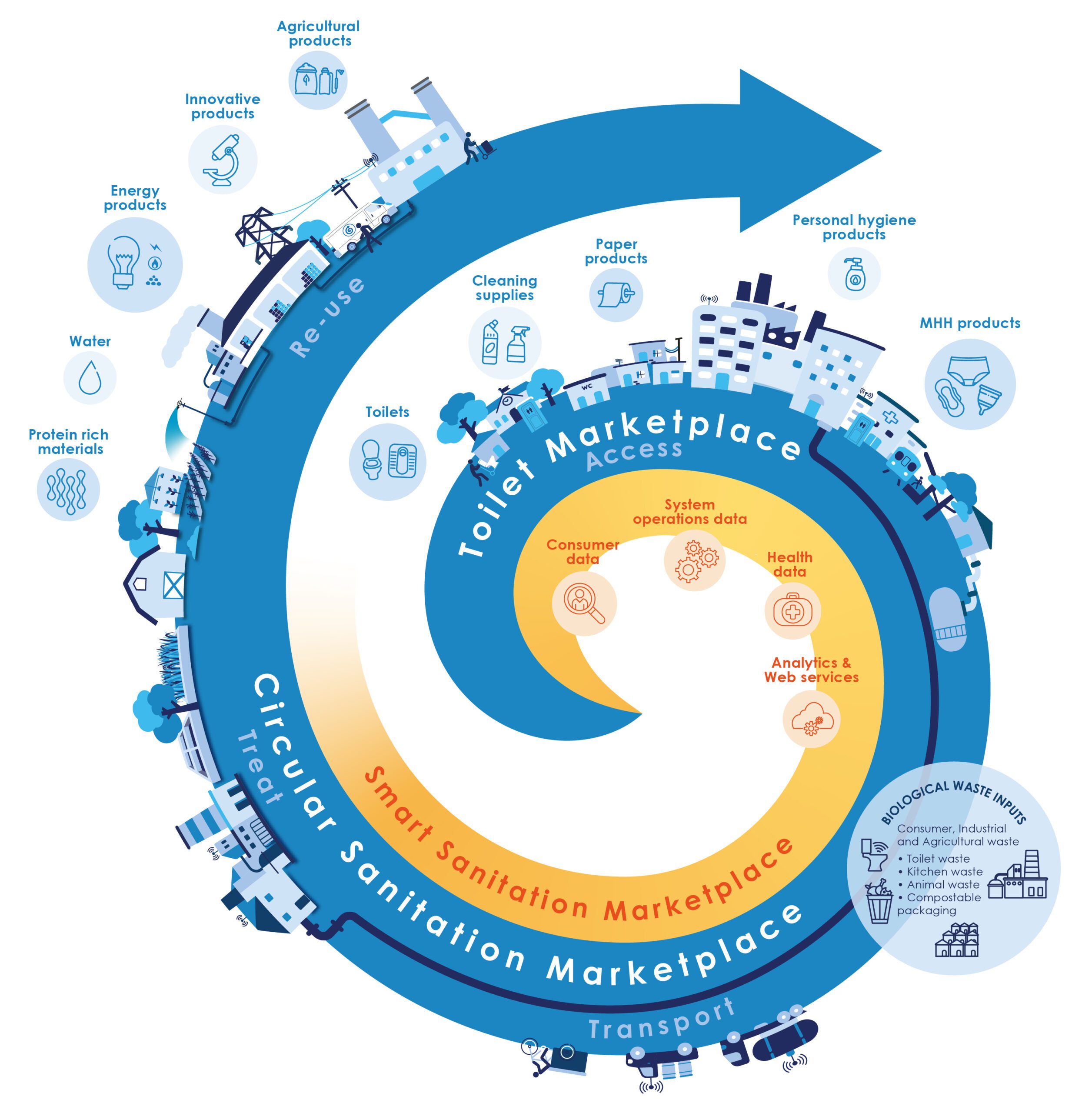sanitation economy infographic
Nearly half of the world lacks access to safely managed sanitation – 3.6 billion people. To address this humanitarian crisis, our leading Members, Unilever, Kimberly-Clark and LIXIL united in 2015 and founded the Toilet Board Coalition to accelerate business solutions to the sanitation crisis.
In 2017 we pioneered a new framing of sanitation – one that (radically) focuses on the value of the system rather than the cost. The Sanitation Economy – a market-based approach to the sanitation system building on innovative business models and strategic collaborations to provide customer-centric & sustainable sanitation products and services to everyone, everywhere. This approach allows businesses to thrive while serving low-income markets, driving engagement towards SDG 6.2.
In the years that followed, we routinely evolved the visual representation of the Sanitation Economy. As we developed our 2030 Strategy, we took a careful look at the 3.6bn people still lacking safe sanitation, our know-how and accomplishments. From this, we identified what portion of the 3.6bn, as of today, can be served by the Sanitation Economy. This is what informed our target to scale 1,000 businesses and impact 1bn lives by 2030.
It became clear though, in this process, that the visual representation of the Sanitation Economy wasn’t telling the strongest and fullest story.
- The earlier illustration showed three distinct economies, where actually, the Sanitation Economy thrives when all the marketplaces are working together.
- Secondly, we wanted to bring the products (icons on top of the spiral) and services (illustrations along the spiral) to the forefront.
- And lastly – we wanted the illustration to tell the generative energy and circular nature of the sanitation economy. Hence the spiral.
The Sanitation Economy is composed of three marketplaces: Toilet Marketplace, Circular Sanitation Marketplace and Smart Sanitation Marketplace, illustrated as a spiral as one marketplace affects the other – an economy that is interlinked, building on and amplifying the value of each component.
The Smart Sanitation Marketplace is designed within the spiral as it overlaps with the other marketplaces, as the entire process is smart – where digitised sanitation systems optimise data for operating efficiencies, and maintenance, as well as generate consumer use and health information insights.
The spiral starts small and scales, symbolising waste that turns into valuable social and economic resources. Products and services range from toilet access to collection and transportation, digitised sanitation, and re-use, where output products are sold back to local businesses or utilised on-site.
An arrow completes the spiral, symbolising the focus of our roadmap towards 2030: Acceleration.
See the Sanitation Economy infographic in detail here.
“With this fresh depiction of the marketplaces we shine light on the regenerative and interconnected potential of a Sanitation Economy that is thriving circular and smart. To accelerate progress on SGD6.2, we need to capitalise on the value of the Sanitation Economy and equip the businesses within to scale.”
Greg Davies, CEO Toilet Board Coalition








